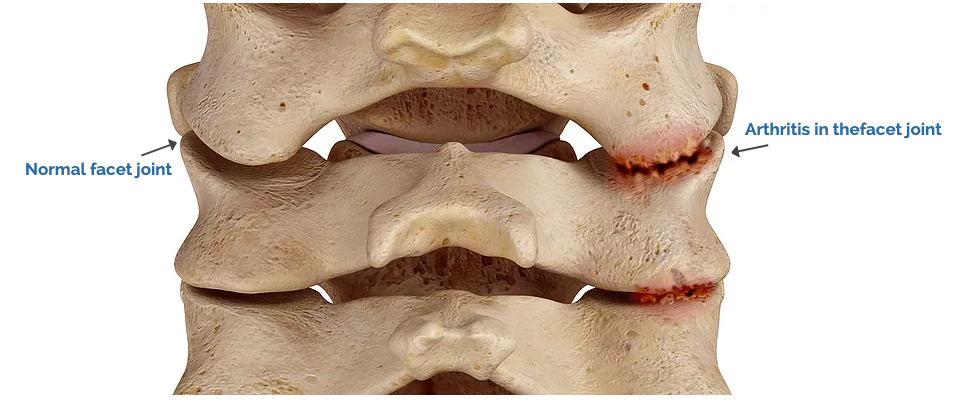What is a Medial branch Block?
A Medial Branch Block is an injection of drugs around the nerves which go to the joints in the neck or back that are thought to have arthritis. This injection is to determine if further treatment with a heat source called a radio frequency ablation will be beneficial. This injection is only to diagnose the source of the pain and is very short lasting.
Why perform a Medial branch Block?
A Medial Branch Block is performed in order to get drugs, such as steroids and local anesthetic, as close to the nerves as possible. When there is a problem with one of the joints in the spine, it can cause pain by pinching a branch of the nerves called the medial branch. This problem with the joints is usually due to arthritis and is common after whiplash injuries in the neck and common with wear and tear in the low back. When this affects the Lower back you can have problems with standing or sitting for long periods of time and pain when you stand at the kitchen counter and do activities like dishes.
If you are taking a blood thinning medication you must let us know beforehand as this somewhat increases your risk. We will discuss your options and optimize the safety of this procedure.

Can anyone have a Medial Branch Block?
Most people can have a Medial Branch Block. If you have any localized infection, such as a skin infection in the area around the injection site, or a generalized infection, the procedure would not be performed until the infection has cleared up. This is for your own safety as having an infection on the day of the procedure can cause a worsening of the infection.
The procedure is done under live X-ray to ensure that the injection is given in the correct place. If you are female and below the age of 55 you will be asked about the date of your last period, and you may be asked whether you are likely to be pregnant. Although the amount of radiation used is small, there is always a risk to the fetus with radiation. Occasionally we may need to ask you to have a pregnancy test.
What are the risks and complications?
that the injection has reached the appropriate nerves, so there may be some numbness and weakness of the legs.
Headache may occur in one percent of patients who have an epidural but this should not happen after medial branch blocks. This is due to the inadvertent puncture of the dura. This can be treated and is rare but does occur.
Infection is always a risk whenever anything is injected into the body, and we take precautions to avoid this by performing the procedure as a fully sterile technique. If an infection does occur it can produce the symptoms of feeling unwell, headache, and stiffness of the neck. This can occur quite soon after the injection.
There is the possibility of an abscess forming in the epidural space, which may occur after two or three days, and would give rise to pain in the back and worsening pain in the extremities. Similar symptoms may occur if there is a blood clot within the epidural space. This is more likely to occur if you are taking medicines to thin the blood. Overall, these complications are extremely rare.
However, if you start to suffer from any of these symptoms, you must go and see your doctor or the Emergency Room of your local hospital urgently (do not go to Urgent Care), and inform them that you have had an epidural injection.
How is the procedure performed?
The procedure is performed in the operating room or office under live X-ray. When you arrive a small needle may be inserted into one of your veins, for safety, so that should any drugs be required, they can be easily given. You will be expected to lie on the table face down.
Local anesthetic is injected into the skin and deeper tissues to reduce the discomfort of the procedure. However, when the needle is inserted there will be a feeling of someone pushing in your back or neck, which is normal. When the operator has put the needle in, X-rays will be taken to confirm that the needle is correctly positioned. When the operator has confirmed that the needle is in the correct place, the injection will be given and the needle removed.
What happens after the procedure?
After the procedure you will go into the recovery area where your blood pressure will be monitored. As local anesthetic is normally used as part of the injection technique, you may notice some numbness or weakness of your legs. This is only a temporary problem, which will wear off. Therefore you will not be allowed to go home until you have full sensation in your legs.

